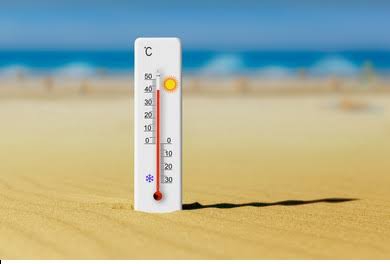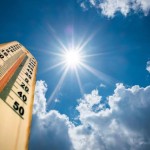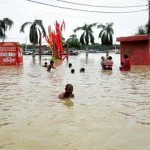Varanasi, renowned for its spiritual heritage and vibrant culture, faced a fiery ordeal on Saturday as temperatures soared beyond the 42-degree Celsius mark. The scorching heat, coupled with unbearable humidity, rendered air coolers and air conditioners ineffective, leaving the residents in a state of discomfort throughout the day and night.

Heatwave Grips Varanasi
The meteorological department has issued a warning, predicting that this oppressive weather will persist for the next three to four days, with temperatures likely to rise even further. This intense heatwave marks the beginning of the 'Nautapa' period, a nine-day phase notorious for its extreme temperatures as the sun's rays directly hit the Earth, causing a significant spike in temperatures.
Record-Breaking Temperatures
On Saturday, Varanasi recorded a maximum temperature of 42.3 degrees Celsius and a minimum of 29.5 degrees Celsius, both figures exceeding the normal range by nearly one degree. This abnormal rise in temperature resulted in severe discomfort among the populace, as they struggled to cope with the relentless heat and humidity.
The Impact of Nautapa
Nautapa, literally translating to 'nine days of heat,' is a period when the sun is at its closest proximity to the Earth in the northern hemisphere. During this time, the intense solar radiation directly impacts the region, causing a significant increase in temperatures. The direct sunlight not only heats the air but also increases the ground temperature, contributing to the overall heatwave conditions.
Coping with the Heat
Residents of Varanasi are advised to take several precautions to mitigate the effects of this extreme weather. Staying hydrated is paramount; drinking plenty of water and consuming fluids can help maintain body temperature and prevent dehydration. Wearing light, breathable clothing can also help keep the body cool. It is advisable to avoid outdoor activities during peak heat hours, typically between 12 PM and 4 PM, to minimize exposure to the harsh sun.
Health Risks and Precautions
Prolonged exposure to such high temperatures can lead to heat-related illnesses such as heat exhaustion and heat stroke. Symptoms of heat exhaustion include heavy sweating, weakness, dizziness, nausea, and fainting. If these symptoms occur, it is crucial to move to a cooler place, drink water, and rest. In severe cases, medical attention may be necessary. Heat stroke, a more serious condition, requires immediate medical intervention as it can be life-threatening.

The Role of Weather Forecasts
Keeping abreast of weather forecasts can help residents plan their activities and take necessary precautions. The meteorological department's updates provide critical information on expected temperature trends and heatwave warnings, enabling people to stay prepared and safe.
Conclusion
As Varanasi grapples with the intense heatwave brought on by Nautapa, it is essential for residents to stay vigilant and take appropriate measures to protect themselves from the extreme temperatures. The combination of high heat and humidity can be particularly challenging, but with the right precautions, the adverse effects can be minimized. Stay hydrated, stay indoors during peak heat hours, and monitor weather updates to navigate through this period safely.











